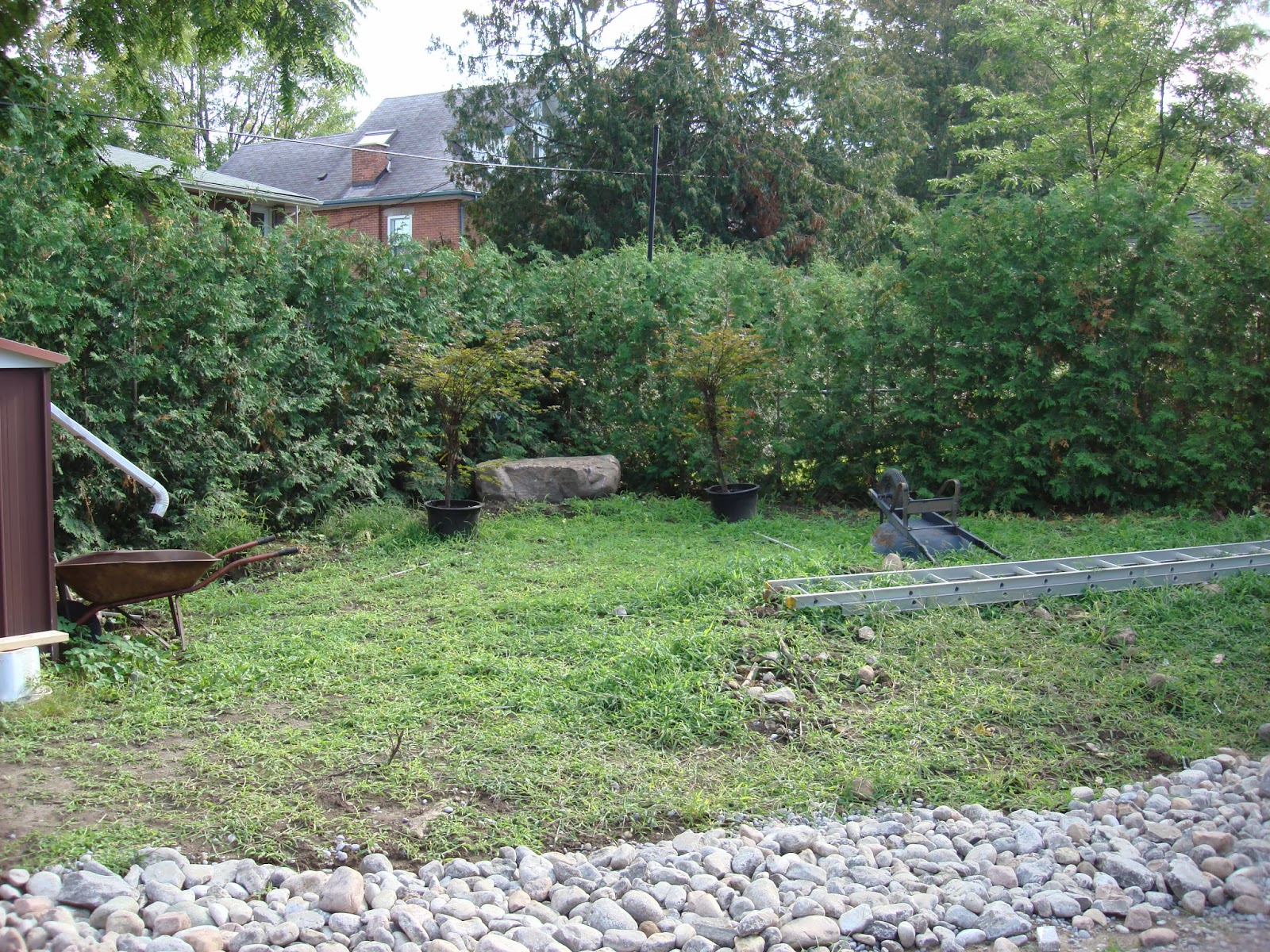Time to get those roses on the road.
It had been raining off and on all day, and getting much cooler by the day- Fall was definitely around the corner.
I must say I admit I was getting anxious about having to find the time to move all the plants I needed to. The beds in the front were almost ready, but the back !! eei-eei-ooo....
In the meantime, the Crab Grass was having a 'hay'-day ! All that I dug out, had been gleefully replaced by more and more ! I needed more time and more shovel-wielding weeders. Of course, there were none to be found. At least it was easy to pull as there had been some rain.
This does not look anything like a rose bed.
So, I decided to work at the front because there was more room and the bed was almost ready.
At a lecture at our Horticultural meeting, I asked if I should cut back my plants in order to move them, especially after hearing that each plant has its own cycle and should be cut back when it has taken in all the nutrients it can. The speaker suggested I wait until the first hard frost when all the leaves would be gone.
My concern was that the weather would be prohibitive, like the last time we moved the garden where was up to this point - the same time of year. Prohibitive, my foot - It was dark and cold with snowflakes and sleet and we were digging holes, throwing in bone meal, saying a little prayer and shoving roses in holes higglety-pigglety… and almost all of them survived and did well, and only one balked at the process.
Sigh. So I guess I can do it again.
For my planned rose-moving day, the weatherman promised high winds and pouring rain…. But… he lied. It was cool and windy, but only spit now and then. I decided to ‘make hay while the sun shines’ as they say and get on with it. That turned into a whole day and here is what I moved.
13 roses-
2 x Polyantha-‘Mothersday’
1 x David Austin’s “Evelyn” - pink Rosa AUS - English
2 x ‘Kristin’ var. Benmagic PPAF a miniature rose
1 x ‘White Lightening’ - var.Arowhif Pat. # 4670
3 x ‘Tournament of Roses’ - cv. Jacient Plant Pat. 6725
1 x ‘Eglantyne’ David Austin
1 x ‘Lambert Closse’ - Rosa explorer
1 x ‘Astrid Lindgren’ -
1 x mystery white that we think might be ‘Kathy Wade’
14 or 15 Monkshood (all new stems from one plant put in last fall !)
6 Delphiniums- blue and fuchsia
2 Penstemon
1 lonely bright pink Coneflower (where did that come from ?) called ‘Magnus’
A couple of dozen stems of Sedum that I salvaged from the previous garden in the hopes that new plants would form
4 white Phlox - dwarf
3 bright purple Phlox- dwarf
7 new Sedum
I gorgeous Japanese Anemone -Anemone x hybrida ‘September charm’
1 Claudie Hydrangea
1 Lace Cap Hydrangea
2 Astilbe
When I dug each hole, I put a huge handful of 3-Way Mix which contains peat humus, peat fibre and manure from Pefferlaw Peat (www.pefferlaw.com). Because of the contest I mentioned in a recent post, I did some research about this company - it is in my zone, and I like the description of their products - so I decided to give it a try. I will know next season if it is all I think it will be.
Besides, having it all in one bag works for me…..It is dark and rich and just for good measure, I added a pinch or two of bone meal.
(Be careful not to breath the powder in…. Not good for our lungs, being that is ground up bone. Same with blood meal- perhaps the granules would be better and not as airborne).
I usually fill the hole with water when I plant, but we had so much rain, both the plants and the earth were quite wet so I didn’t. I did talk to each plant, though and assured them this would be the last time I would move them. Oh dear, I may have lied about that. I firmly believe if plants don’t do well in one spot, it is better to move them where they will do better. But that is not the same as hauling them halfway across the city or even around the block, or is it?
Here's how it looked that fall:
....... and the following summer- its first:



















